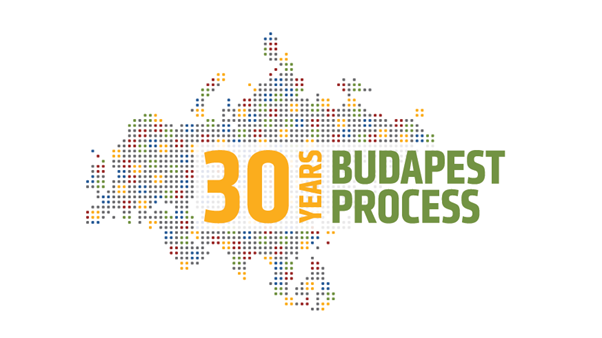2023 marks the 30th anniversary of the Budapest Process. This December, Budapest Process Senior Officials will gather in Istanbul to celebrate its anniversary. At the same time, discussions on the new Ministerial Declaration and Action Plan to be adopted in its upcoming Ministerial Conference will commence. As the dialogue ushers itself to a new phase, it is worth taking stock of its successes from the early days to what it has become today.
Back in 1993, Ministers and delegates from 41 countries and organisations gathered in Budapest and agreed upon 32 recommendations to take forward and implement jointly. In its first phase, the dialogue focused mainly on tackling irregular migration with recommendations at the time linked to exchange of information, improvement of border management and legal harmonisation of crimes such as trafficking in human beings.
Since that first Budapest Process meeting, the dialogue has evolved and expanded both thematically and geographically while keeping some key components of its early meetings, which led to its success and sustained engagement.
In the first decade of the dialogue, its success was mainly due to its pragmatic approach, prioritising which recommendations to tackle from the Budapest Ministerial and setting up Working Group meetings to this end. In addition, the annual Senior Officials Meeting, known at the time as the Budapest Group, became a regular event for government officials to meet on equal footing and share their priorities on migration with each other.
Conferences at the Ministerial level remained an impetus for the dialogue and an opportunity to solidify the structure of the Budapest Process. Over the subsequent Ministerial Conferences in 1997-2003-2013-2019, the dialogue expanded geographically eastward, as it sought to partner with neighbouring countries of the states already involved. The Caucasus and Central Asian countries were invited to join the dialogue. A specific turning point occurred in 2006 when Türkiye took over the Chairmanship of the dialogue from Hungary and extended an invitation to the Silk Routes countries in 2010, to find common ground for cooperation in the migration field and to have stronger engagement with countries of origin, transit and destination.
The “Silk Routes Partnership for Migration” was born and has been the backbone of the dialogue since the 2013 Ministerial Conference. The geographic expansion was paralleled by a thematic expansion, with dialogue partners discussing not only irregular migration but legal migration, migration and development, international protection and integration. Even further, projects co-funded by the EU and EU Members States under the umbrella of the dialogue were implemented in Afghanistan, Bangladesh, Iraq and Pakistan responding to the needs of dialogue partners and to the priorities set out in the 2013 and 2019 Ministerial Declarations.
The Budapest Process navigated through several crises years, the so called “migration crisis” and other unforeseen difficult moments, such as the Covid pandemic, the fall of the Afghan government and the war in Ukraine. By adapting its focus while keeping its core structure and its network of focal points, the Budapest Process dialogue’s success to date is matched by its length and breadth.
The key ingredients of its success in the early days remain true today: a base of trust, a search for common ground and cooperation, a strong network and a flexible structure. While it is clear that the dialogue has been met by action and cooperation on the ground in the past three decades, the importance of linking the dialogue’s outcomes to concrete impact and improved migration governance is evermore a priority. The latest expansion of the dialogue to include Jordan and Lebanon opens new possibilities for cooperation. Finally, the link between the dialogue and the regions in which it operates should become stronger, bringing the dialogue to the Silk Routes region and the Silk Routes region to the dialogue.

